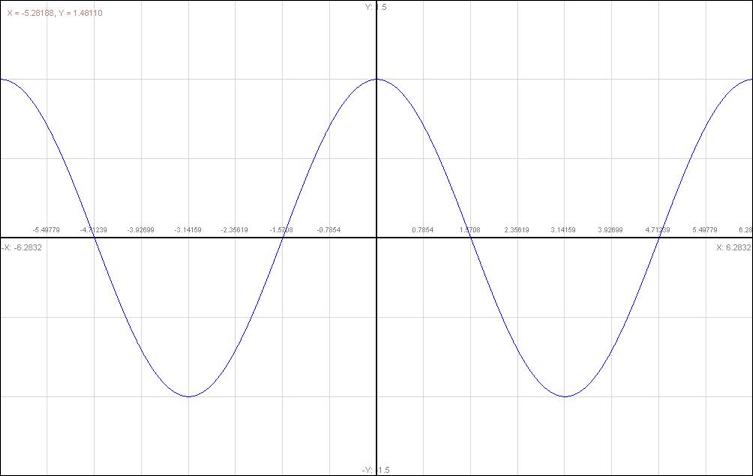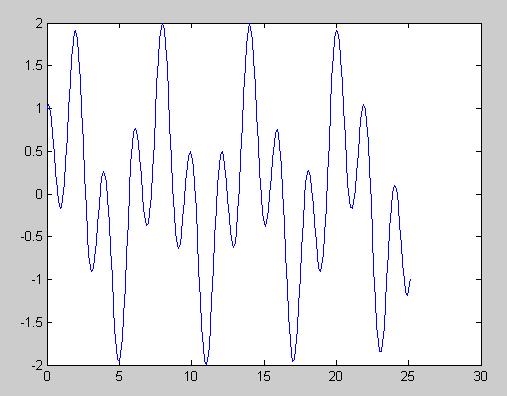(→Periodic Functions) |
(→Non-Periodic Functions) |
||
| (3 intermediate revisions by the same user not shown) | |||
| Line 2: | Line 2: | ||
y = sin(3x) is a continuous function and has a period of 2pi/3, like shown on the graph below. | y = sin(3x) is a continuous function and has a period of 2pi/3, like shown on the graph below. | ||
| + | |||
| + | [[Image:Sine_ECE301Fall2008mboutin.jpg]] | ||
==Non-Periodic Functions == | ==Non-Periodic Functions == | ||
| + | |||
| + | The function y = sin(x) + cos(pi*x) is no a perdiodic function. It is interesting how both of its components, sin(x) & cos(pi*x), are periodic but when added the function is no longer periodic. | ||
| + | |||
| + | [[Image:nonperiodicadd_ECE301Fall2008mboutin.jpg]] | ||
Latest revision as of 21:53, 4 September 2008
Periodic Functions
y = sin(3x) is a continuous function and has a period of 2pi/3, like shown on the graph below.
Non-Periodic Functions
The function y = sin(x) + cos(pi*x) is no a perdiodic function. It is interesting how both of its components, sin(x) & cos(pi*x), are periodic but when added the function is no longer periodic.



